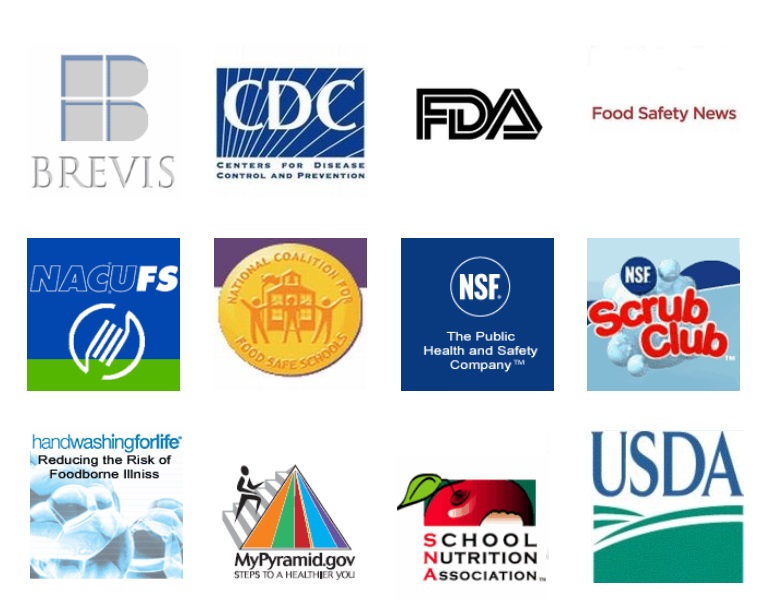Hand sinks: Often Taken for Granted, but an Essential Part to Effective Hand Hygiene
Late in January, I received a question about hand sinks in a foodservice operation. The question pertained to school staff (teachers and aides) who were using a hand washing sink in the school kitchen. The question came as a matter of who was allowed access to the kitchen to use the sink, but the question itself caused me to go down a rabbit hole of requirements for hand washing sinks in foodservice operations.
Hand sinks are, perhaps, taken for granted by many managers, supervisors, and employees in foodservice operations when it comes to reviewing hand washing effectiveness. They are easy to take for granted, until they are not working. Even in these blogs, we’ve focused on the correct procedure for washing your hands, when to wash hands, and hand washing supplies, but we don’t often focus on the hand sink.
The FDA Model Food Code states at least one hand sink should be available to employees. Further recommendations are that the sink should be convenient for employees who participate in food preparation, dispensing, and ware washing and there should be a hand sink immediately adjacent to restrooms.
…employees are more likely to wash their hands if the operation has more than one handwashing sink and/or a sink is located within the sight of the employee.
Our previous research has found that one big barrier to employees washing their hands is how convenient the sink is to their work area. Remember that your definition of convenient and your employees may very well differ. I once had one of my employees tell me that he can’t wash his hands as many times as he would need to by “the code”, simply because it takes too much time, and we expected him to get food out to our guests in a timely manner. Even though our management team thought that both hand washing sinks in the kitchen were convenient for all of our employees, employee perception didn’t agree – and it was the employees’ perception that really mattered as they were the ones working in that area 40 hours a week.
Other research in the field has also found employees are more likely to wash their hands if the operation has more than one hand washing sink and/or a sink is located within the sight of the employee. So how many is enough in your operation? The food code doesn’t give a straight answer to that question because it really does depend on your business. For a small-scale, limited production kitchen, one sink may very well be enough. However, for larger operations with complex food production, many sinks would be desired and recommended.
Solid recommendations on the number of sinks required are difficult to come by. Foodservice Equipment and Supplies Magazine noted that you should allow one hand sink for every five employees working in your kitchen at a time. Further, they noted that one hand sink should be planned for every 300 square feet of kitchen space, and one hand sink for each foodservice preparation and/or cooking area. These recommendations align with research in the area and would certainly mean that the hand washing sink is convenient and in view of each employee in the production area.
While this is great information to have, many who are reading this are likely dealing with kitchens that are already built and unable to easily renovate spaces to accommodate more hand washing sinks. In this case, it is imperative that we try to reinforce the importance of hand washing with our employees and remove any barriers they may have to washing their hands. Only then will employees start to change their behaviors and improve hand washing compliance.
Later this month, be on the lookout for the SafeBites Webinar Series announcements for 2023. We have an exciting set of webinars that we are planning this year. In the meantime, if you have any food safety questions, we are a quick email away and would be happy to assist. Risk Nothing.
READ MORE POSTS
Top Food Safety Websites
You ask…How do I learn about food safety regulation? What pathogens in foods can make me sick? What temperature should I safely cook my roast beef to and how do I take food temperatures? How do I clean and sanitize anything according to the FDA Food Code? What and where is the most recent version of the FDA Food Code? Where can I find food safety educational materials galore in book form or online? Do I need them in Spanish or a Chinese dialect?
A Little Poultry Safety Information
Chicken is the number one species of protein consumed by Americans – we eat about 80 pounds of it per year. Outbreaks of foodborne illness have long been associated with poultry and eggs usually by undercooking it or cross-contamination of other foods by raw poultry. Recent concerns about avian or bird flu put the direct focus on our fowl food with concerns about whether this awful disease can transfer from birds to humans.
The Basic Principles of Food Safety
Every food establishment uses, processes, and sells food in different ways. However, the general issues and key principles of food safety remain the same, whatever the style of the operation. All food safety training programs should contain the “big 3” factors that could cause food to become unsafe. Food must be kept out of harms way from human errors, but if you don’t train food workers what they are, they won’t know why these factors are so important to your operation. The basics can make us or break us in one or maybe two food handling mistakes.
Be Aware When You Prepare – Food Prep Tips
The subject of food preparation covers some very broad, basic principles within food safety, with many steps associated with “risk” in some recipes. Certainly, preparation steps are where the most mistakes have occurred if a foodborne illness should occur. Outbreaks usually happen when more than one mistake occurs during prep, but sometimes it only takes one. Cooking is the biggest risk for raw foods, but all foods become ready-to-eat foods at some point in final preparation steps and that’s where the most care is required.









